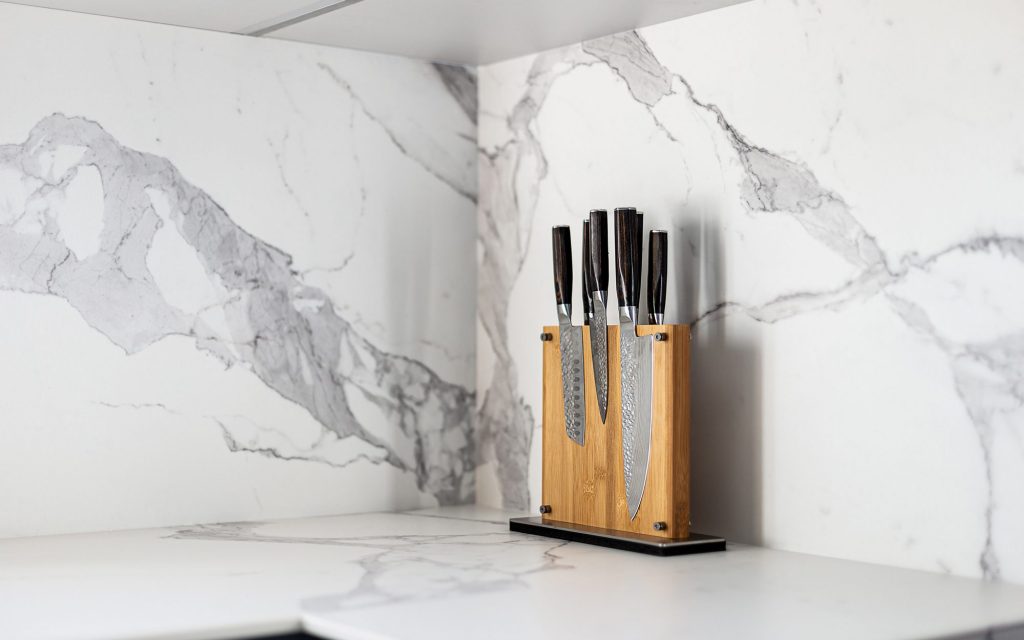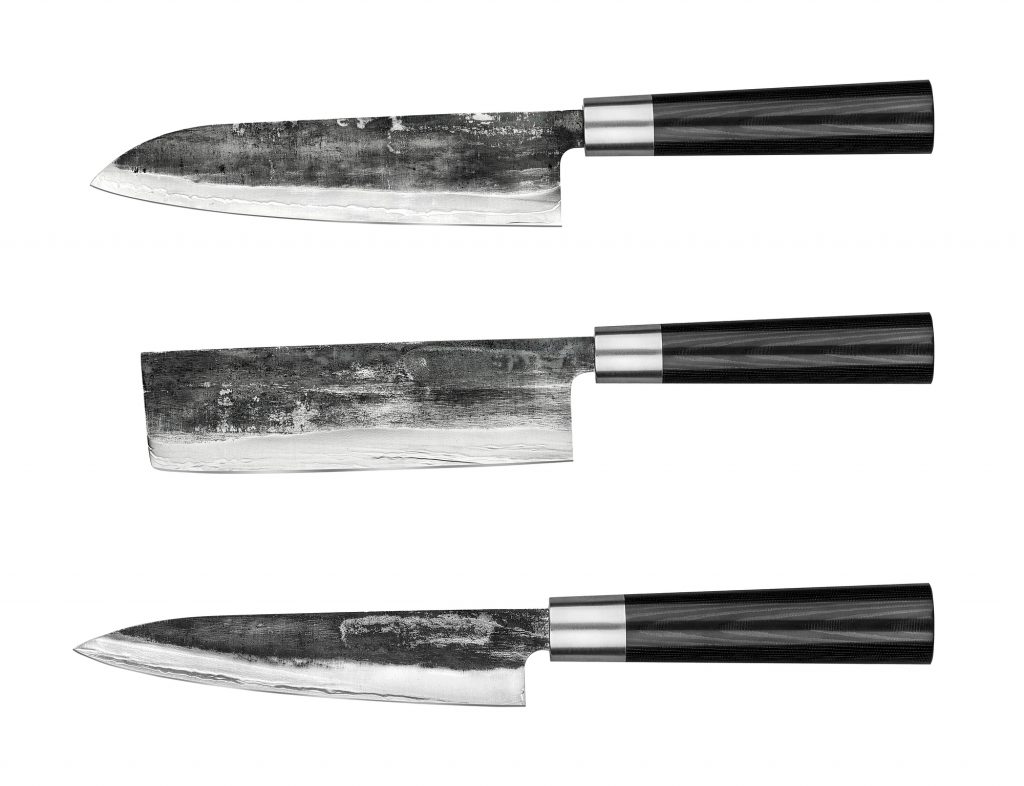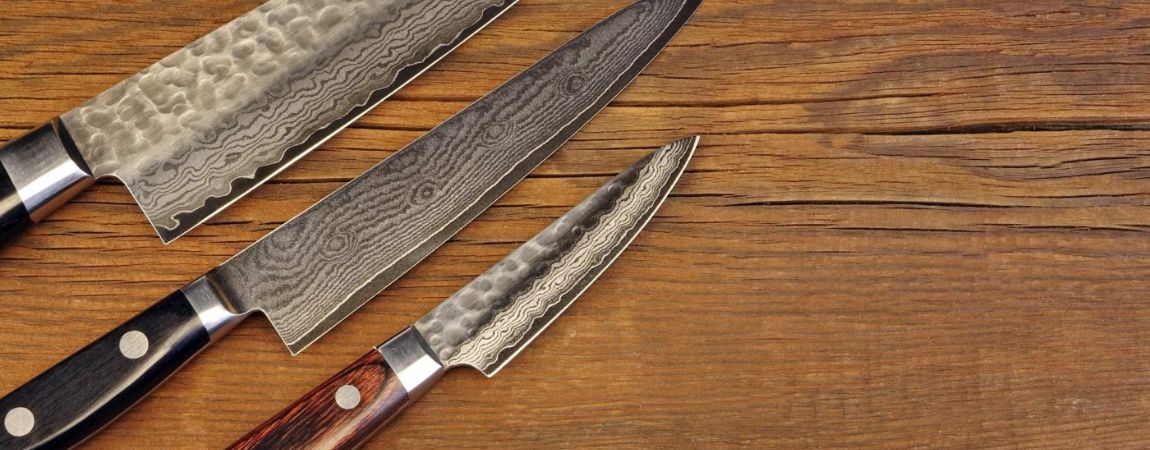Damascus steel knives are the best in their class. They are known for their durability and aesthetic beauty. If you’re looking to purchase a Damascus steel knife, you will want to make sure it is real so that you get your money’s worth. Damascus steel is a method of folding steel numerous times to get a higher quality blade that will not rust as easily as other materials. You can learn more about what is Damascus here. Fortunately, there are several methods that can help tell if the knife is made of genuine Damascus steel or not.

What Methods are Used for Creating Damascus Steel Knives?
In general, kitchen knife workers melt iron and blend it with steel scraps and charcoal. This creates an alloy that is folded multiple times, creating that telltale pattern so many knife aficionados and chefs desire from these quality blades.
This is typically done by hand or with specialized equipment. That is why these knives are such a challenge to create and why they’re so expensive. It’s also one of the reasons why they’re so beautiful! You can learn more about the details of how Damascus steel is forged in our article here.
How to Test if You Have Authentic Damascus Steel?
The promise of a Damascus steel kitchen knife is higher durability, longer-lasting edge sharpness, and a beautiful layered pattern along the side. Damascus steel blades are premium tools, and you want to be getting an excellent addition to your kitchen knives for presentation or regular use. Here are a few methods for testing the authenticity of the blade:
1 – The Acid Method
Most of the time, you can tell a Damascus blade by the visible patterns and structure, but in those rare cases when you think you may have a fake, you can try acid. You do this by polishing a small section of the blade until you cannot see the wavy pattern any longer. Dip this into an acid solution, and if the pattern reappears, you have the real thing. If not, you may have purchased a laser-etched knockoff instead of the folded patterns that make the blade durable.
While this method is probably the most reliable, it will leave a mark on your blade. You may want to save this as a final test after trying the other methods we list.
2 – Look at the Etching
Real Damascus kitchen knives have a clear etching pattern that you can tell is done naturally. Fake blades use laser methods or stamping to “recreate” these patterns. They tend to be either hard to see or easily missed, no matter what angle you hold them up to the light. The clearer the etching, the more likely you have real Damascus steel. Unfortunately, all it takes is some nail polish and light acid to recreate etching patterns, but they have to be done by an expert forger to trick most buyers.
3 – Uniform Folding Patterns
A kitchen knife made of authentic Damascus steel will have uniformed folded patterns. Usually, these look highly detailed and elaborate but are also consistent enough that you can tell where and how the metal was folded. A real Damascus steel blade will have uniform patterns along the knife sides, blade tang, bolster, and sometimes even the knife’s butt. Damascus steel blades are also more premium in the overall design. If the manufacturer is cutting corners with no tang or other features that make you question the quality, you may have a fake.
Why Isn’t the Pattern Visible Everywhere on the Blade?
Some manufacturers wish to make an “artistic decision” about the layering patterns of their blades and will polish out the pattern in certain areas of the knife. That does not mean these are not actual Damascus steel blades. You should be able to tilt the knife to bright light and still see evidence of these polished areas with the folding pattern underneath. The problem is if the entire blade has no folded pattern and you cannot see any leftover evidence, then you should double-check whether or not it is trustworthy Damascus steel.

What is that Black Residue Coming from My Knife?
In some rare cases, Damascus steel is reinforced with acid etching. This can leave oxides on the blade that come off when you cut through food. You can fix this with a good hand cleaning with warm water, and a white cloth will remove this residue. We suggest a fine 4000 micro-mesh that is very gentle and polishes without removing material.
Conclusion
The methods described above are the best ways to get a general idea of whether your knife is made out of Damascus steel or not. However, they won’t tell you exactly what type of metal has been used. If the tests fail, it is possible that there could be another substance mixed with the metal. There are many different types of metals, including stainless steel and carbon steel which can sometimes have similar appearances to Damascus blades – so if you’re worried about authenticity, then take your knife to an expert for a more thorough analysis.




Post Your Thoughts